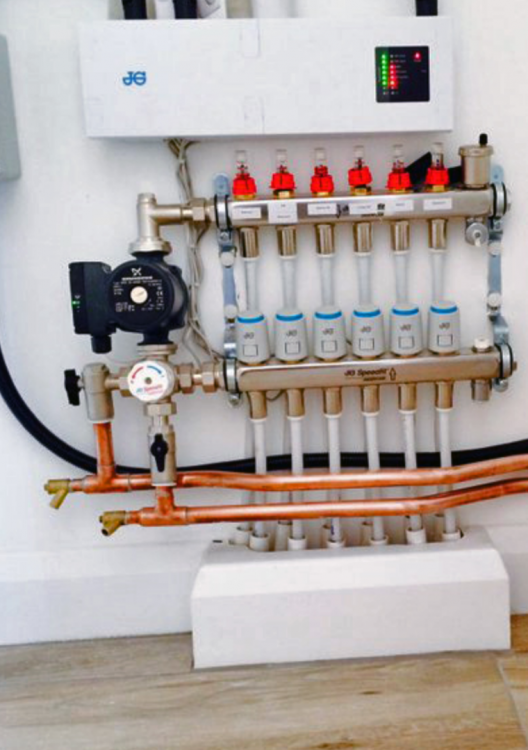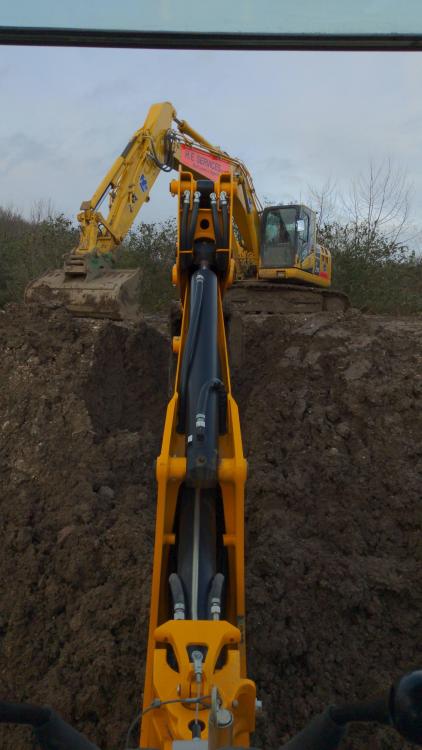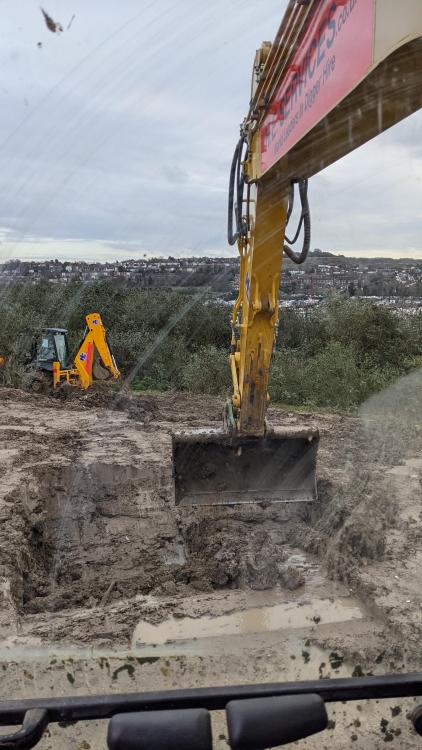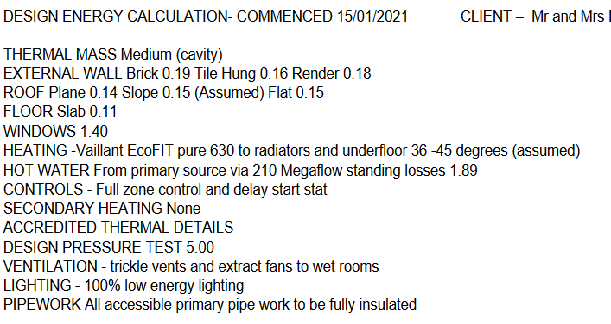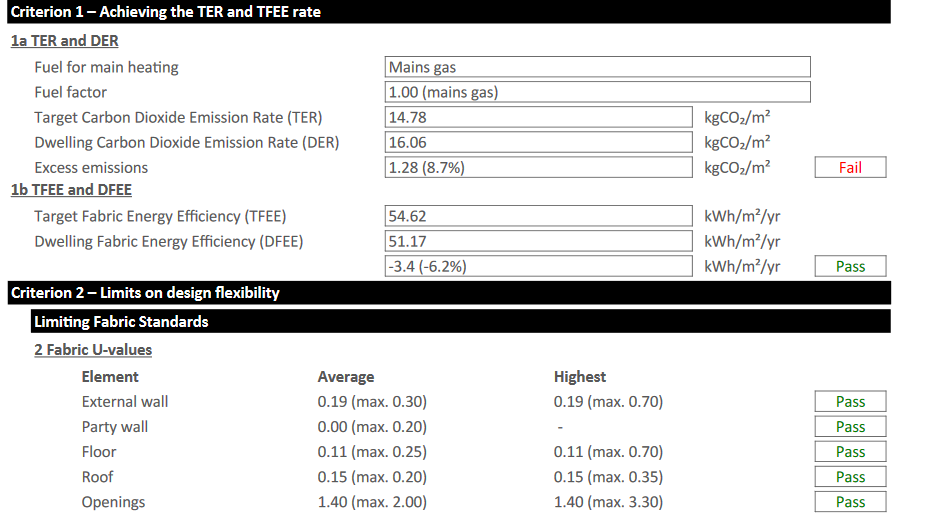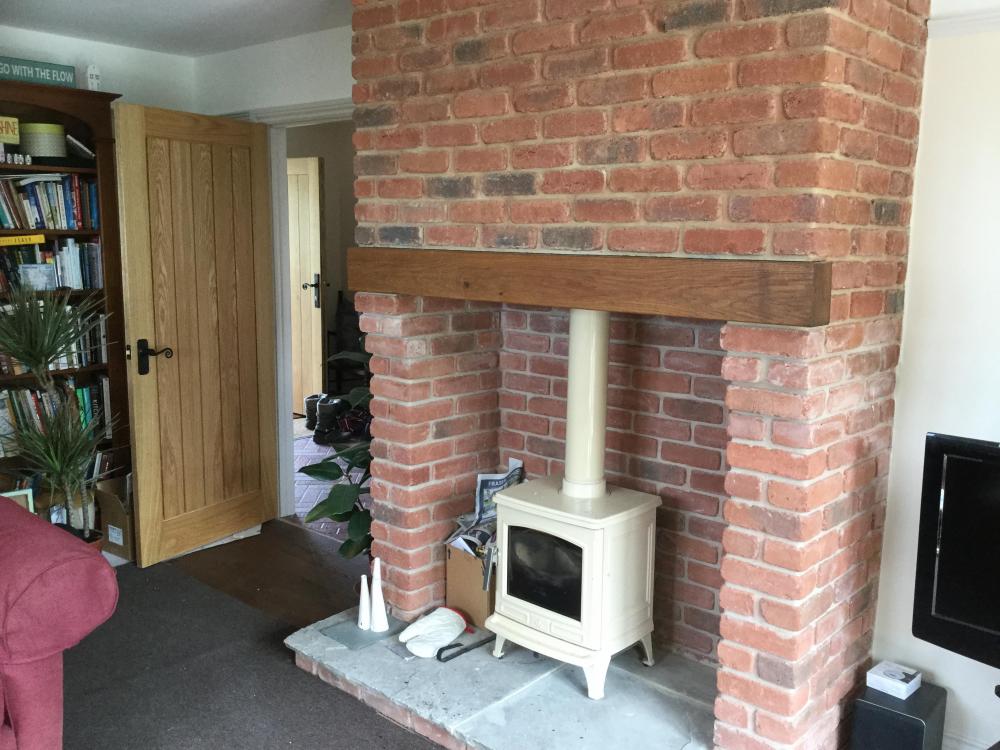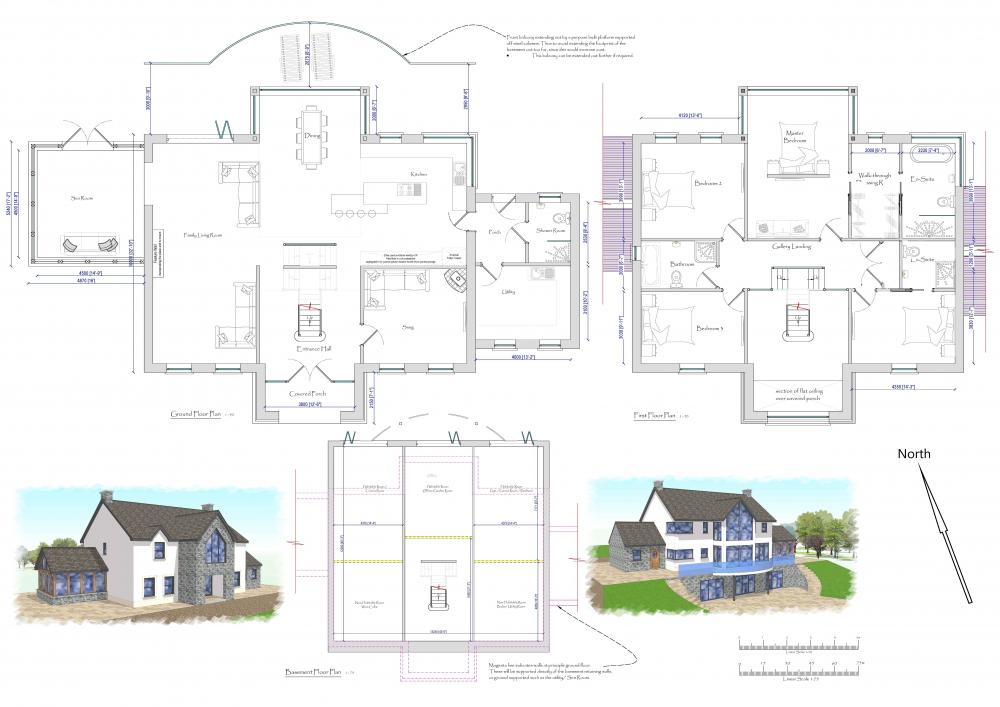Leaderboard
Popular Content
Showing content with the highest reputation on 01/19/21 in all areas
-
4 points
-
We have just had our RHI grant approved thank God and the payments start in March which will be a godsend - will go towards our mammoth electricity bills!2 points
-
Hello @834843 " "Hi folks, I'm in the process of buying a first floor flat in SW London. It's a Victorian end-of-terrace house, about 950 sq ft, and it needs complete renovation..." To all.. a few general points when thinking about altering flats. The top floor flat can be less problematic to convert from a structural point of view. Tenement flats or similar can be tricky, as are blocks of three storeys and more. Some blocks have a shop on the ground floor that has been opened up to form a more clear / open plan floor area. The first floor flat above a shop like this is the most difficult to tackle when you want to knock down a wall. What can happen is that when you knock down a wall you start to introduce point loads (from the beam you put in if required) and these can suddenly change the load distribution on say the shop beams below. Often for the attic (not high rise) you find the roof spans front to rear, this helps to hold the walls in place. But.. in some cases the internal walls in the top flat provide stability to say a gable wall at the end of the terrace. This can be more of an issue say in England etc cf Scotland where sarking boards are used. Sarking boards stiffen a roof at rafter level. In laymans terms this means (sarking used) that you turn the roof into a couple of big beams that can more easily transfer say wind load to where it is more esily dealt with. In terms of structural design it's important to consider how what you do will impact on the whole building, not just your flat. This means that you often want to see in the flat below, or if you have mid floor flat then you also want to see what is above. What you are looking for is the actual layout, alterations that have a completion certificate but also as importantly, alterations that have been carried out with no approvals... cowboys. Apart from the safety issue there is an old expression has some merit..last man (person) on the job gets the blame. If you are budgeting on the basis that you may turn a profit by making an alteration it may be worth paying / asking for some advice first. To keep the cost of this down one of the best ways is to put together a small info document. Often you can find estate agents floor general plans on line showing the properties above / below that have come on the market. Take some extra photos of the inside / outside of the building ( the bit the agent has not included) etc and put this all in a document...the more info the better. This can really help someone give you initial advice / pointers.. which is often free if they feel you have put effort into it. If you write to say an SE and say "how much for a loft conversion" you'll just get a genric response. @834843" In regards to the type of work, is an architect essential (vs. an architectural technologist vs. structural engineer)? The essential thing is to find someone that has experience. One key here is to appreciate that every job is different although all the flats may look the same as the next block. Much can be lost on the builder's labour charges if the structural connections are too complicated, or the insulation details and materials can't be bought off the shelf (you often need to pay premium for a small quantity), you can't physically get a beam up the stairs and into the attic and so on. I have found that many experienced Architects / Architectural Technologists have a sound understanding of the structural concepts and SE's reciprocate. There is much cross fertilisation between the professions. All the best with your new home.2 points
-
2 points
-
You can improve things even better than that these days (for many years in fact). Digital stats with 'time proportion and integral' control algorithms don't wait for the temperature to dip above/below thresholds before doing something. Instead, when they are in their 'proportional' band (of, say, 2C either side of the set point), they will either request a proportioned heat demand signal to the heat source if that's available (eg a modulating boiler controllable via opentherm) or if like me you've only got on/off controls available they it'll use pulse-width modulation to synthesize the same effect eg if it calculates that it needs 20% heat input to maintain the set temperature then it'll trigger a demand for 2 minutes in every 10. Simple, reliable (it constantly self-learns) and - most importantly - extremely effective at maintaining comfort. I've had a Honeywell CM927 for 15 years now and once up to temperature I don't think it ever really moves off the set point.2 points
-
2 points
-
Add to Gary's ( @nod ) wise view : think about the problem for yourself too - how for example anyone going to repair / clean / clear the drain run? Will the groundworker take responsibility for an inadequate design ( PPI ?). Run the design past your plumber too. To answer your question directly None. Because everyone is shoving responsibility to everyone else. And that pisses me off. Exactly what everyone tried to do to us. 'King lazy if you ask me. Because everyone's final answer is "Well its up to you mate" So, ask everyone, pay no-one for the design because nobody is going to commit - unless they do commit of course. Can you tell I'm cross about the issue for you? Good because it happened to us. Why? Because its about the soft and smelly stuff. And thus to be avoided as far as self-build is concerned. A large house builder would not stand for it. Gather a range of views and spend a bit of time researching the subject for yourself. BH is a great place to get a good range of views. The key question is - what happens when (not if) there's a blockage.2 points
-
Interested to hear your proposed solution. I'd like to see proper investment in national infrastructure (from trains to roads to broadband to housing) and an overhaul of the education system that promotes social mobility. I'd axe the private school system, or at least remove their charitable status, increase funding of the current system and revert to free third level education, but seriously look at culling the plethora of profit centred degree factories and focus them instead on vocational / apprentice style training. Much to learn from the german system where there is no shame in being a highly skilled worker and an engineer is akin to a doctor or lawyer, not someone who fixes your washing machine. And rejoin the SU and SM Norway style (we can stay out of the EU politics if we want) to prevent our shrinking manufacturing sector from shrinking further. And a proper progressive taxation system to fund it too that has an element that looks at wealth as well as income. Plus a welfare system that has dignity at its heart rather than spite. A lot of that will require new money and that's best done through cheap debt vs waiting another 30 years until we've saved it up in the national piggy bank. We're the 5th/6th richest country in the world, we can afford it.2 points
-
Never seen a house built on a building notice and very much doubt you will find a company that will do it. The opportunity for finding a 5 figure issue at inspection would be huge.2 points
-
You will give your groundwork’s a detailed drawing Usually done by the Architect or engineer He will take one look at it then shuv it in his pocket and do his own external design2 points
-
@nubbins Waste water heat recovery (WWHR) fitted to all showers could get you across the line if the gap is only a few points. https://recoupwwhrs.co.uk/ https://showersave.com/2 points
-
Tonight's episode I found inspiring. A young couple who have both been through their own medical problems, converting a barn on a small budget. Achieved by doing a lot of work themself, a true self build, with a fantastic result.1 point
-
While gallow Brackets will do the job I’d be amazed if building control didn’t want your builder to use a steel From what I’ve seen over the years many chimney breasts have been removed without informing BC I’ve seen chimneys stripped into the loft and a couple of lengths of 4x4 wedged between the masonry and the ceiling joists1 point
-
Just been reading through this long thread as I have the same ASHP and have been slowly educating myself in the mystic art of running one. Simple they are not and the Samsung manuals make quite good fire lighting paper, they are pretty useless otherwise. On the subject of water law or weather compensation as it should be called, I have my 201* settings as 15 and - 2, the corresponding 202* at 40 and 50. Hot water is set to 48 standard and I schedule this to come on between 17:00 and 22:00 as I have solar PV with isolar boost, so any daytime excess PV gets put into hot water and if needed, the ashp tops it up. You should have the immersion hooked into the panel if not done by solar to give the disinfection cycle otherwise it will give the error described. I manually boost mine via the isolar unit if we've had a bad week solar wise. It will show 50deg plus during hw heating, typically 56 ish. I have a 400l tank so ample to use. The heating 0.0 setting is just the offset to the water law, so setting it at - 5 will take 5 deg off the 202* settings as I understand it. I suggest googling Freedom Heat pumps, the main UK importer and looking up their YouTube training videos. They are a mile ahead of the documentation but even then, they had the water law settings wrong (I've emailed them to point this out, but no reply). As for the Samsung panel display of energy use etc, well that too is fantasy. Electric use not too far out though but energy produced gives a COP of 20! Not that's not a typo, it does indicate 20. Just look at the display of daily hours running. Some will be over 24 hrs... It really is a joke. BTW I found mine glugging heat out of the hot water tank overnight in its own antifreeze cycle instead of the buffer tank. Still waiting for an answer from Samsung on this. Meanwhile I've bypassed the hw valve with a manual switch. Pity you can't program it out as I have enough glycol in the system to protect to - 10ish. Your energy use is very high, but non insulated external walls will just bleed heat out as fast as you put it in. I didn't see what they are made of, but old solid 9inch brick walls have a Uvalue of 3 plus. Ten times higher that well insulated modern construction. Mine are 0.1U as is the rest of the house, floor, roof. Windows triple glazed at an average of 0.78U. 253m2 plus another 100m2 of warm attic. My monthly electric bill to 15th Jan was £107. 65" TV too?. Oh, and we run at 23 deg mostly, 22 in bedrooms, hall, utility. No point spending money on heating and still being cold is there? Hope this helps.1 point
-
Watch the video I sent a little while ago it explains all1 point
-
I chipped grooves the same thickness of the l strap, fixed them with hammer fixings so they were flush with the surrounding concrete then put the flooring over the top.1 point
-
If the ventilators for a design of 5m3/m2.hr have been tightly specified they will not be large enough (about 40% more) for less than 3m3/m2.hr The house looks like it has high ceilings, reducing from 5 to 3 will save about 1kWh/m2.yr but he has to save about 5kWh/m2..yr to get the required CO2 savings.1 point
-
BTW I checked the PV inverters and I am generating roughly 1.5kWh per day at the moment1 point
-
One assumption that should not be made at this stage is that you can obtain electricity from the last pole. For our build we had to go back to the transformer 220 meters away, through some trees, bedrock and a road. The other pole was on our land. Electricity connections are horrible, best to get it done at the earliest possible stage.1 point
-
It all depends on wayleaves and ownership of land it has to cross. Work on a new cable coming under the road, including a road crossing and your £15K could well be true, but it might be less. You also need to find the cost of a water connection, that might be another shock. Why can't you wait? Don't be bullied into completing on the purchase until you are satisfied.1 point
-
You will need your own plans. These could be cheaper if you want them based on what the neighbour has done. Maybe have a chat with them and find out who did the design and the construction?1 point
-
Think your blending valve might be in the wrong way, not sure it makes a difference without a schematic or installer notes, but it spears the boiler connection to right in the middle of blending valve should go to the cold side of the manifold. Attached photo from JG website shows the issue, all the pictures I could find show the manifold configured with pump to the left. If you spin the mixer so the dial is pointing towards the wall it would be more as designed. ( Space permitting)1 point
-
1 point
-
Don't know if they do telescopic shallow bottle traps, don't see why not. They are better than a P trap. https://www.screwfix.com/p/floplast-shallow-bottle-trap-white-32mm/147371 point
-
I have refrained from replying so far, but against my better judgment I am going to give my view........balancing radiators is a correct use of the words......hear me out.......because of the length of pipework, bends etc in a central heating system the radiators nearest the boiler or producer of heat will get hottest the quickest, the radiators furthest from the boiler will get hotter later (if at all!!,), therefore balancing the radiators is a method of restricting the flow to the nearest radiators to push hot water to the furthest (and the ones in between at varying levels). THIS IS BALANCING THE RADIATORS. Now, the amount of heat given in each room is dictated by the size of radiator and during planning/design, the amount of insulation, or not, windows, outside walls is calculated (if this is done properly ?). Now the max temp in each room (if the above is done properly)is controlled by thermostatic radiator valves, when the room is up to temp it restricts the water flow to that radiator. end of lesson........1 point
-
I'm putting in an MHVR into a 1920s build house, mostly solid walls but with some newer extension. My internal brain model is that it should allow for ventilation without the associated loss of heat of opening a window, using an extractor etc etc. We will progressively be working through and insulating each room as we go (and at least we have started this with wood fibre board IWI, Pavatherm recommended by Mike Wye) and sealing as we go so I expect the airtightness to improve, but of course realistically we are never to be anything like that of a modern house. However I expect the benefit from the MVHR will increase as we progress with this job. (We're also ripping out a lot of the upstairs so I have one chance to have simultaneous access to walls, floors and ceilings for fitting the unit and ducting, so it felt like the best time to do it). Ask me in 5 years how it went (!!), but from other forum posts I've read it seems people have been pleasantly surprised at least from the fresh air perspective of a MVHR in an older house.1 point
-
Caravan things are out there a plenty. https://www.ebay.co.uk/itm/164643835176 One with 45mm centres. I’m sure a bit more googling will turn something up.1 point
-
1 point
-
Plenty of lube on the flush pipe before you push the pan on, ive had the rubber gaskets/seals slide down the pipe instead of going into the pan. one was so persistent i had to wrap tape around the pipe behind the seal to stop it popping over the pipe end and sliding back.1 point
-
Perhaps approach the contractor with a fairly easy to achieve airtightness spec of about 2 ACH50 and insist that it's verified and written into the contract. My guess is that they'll tell you that you 1. Don't need it 2. They'll do a great job but there's no need to test it 3. It can't be done 4. It'll cost £100k more. You can build for 1990's money but you'll end up with a 1990's house. My other gut feeling is that the contractor is giving you a low price to get their foot in the door and as soon as you're building they'll find all sort of "unexpected problems," ( Not unlikely TBF) and alter the price accordingly. Ask your architect about some reputable contractors they've worked with and get a few more quotes .1 point
-
@Simon Brooke, Do you have E7? We don't have any CH on the top two floors, and like you during the coldest months the 1st floor is maybe 1½ - 2 °C cooler ran the ground floor. However I use a small oil-filled electric radiator in the doorway of my study which opens onto the hall landing. This is on a timer and dumps maybe 10 kWh space heat onto the first floor (and second floor by convection), and this gets rid of this layering. It's 10kWh into the general mix for house heating for under £1 per night. Still, it keeps the first floor nice and means that I can wander around bollock naked during the night and still be very comfortable -- though my wife (and son who live on the top floor) might not be, but that is only visual ?.1 point
-
The cost for application is the same. And it makes you plan stuff such as all the points I have called out such as pipework that cannot be installed due to steels or joists the wrong way round.1 point
-
Need to take it all apart, open up the wall, modify the drain pipe so it comes out higher up the wall and re assemble. It's "little" things like this that on another thread I said there is a LOT more to being a successful tradesman than knowing the regs.1 point
-
Is the rest of the house sapping the heat? I had issues with one of those actuators trying to get it to calibrate, the floor was always warm. In the end I loosened the body about one turn, did the calibration, then once completed tightened it back down on the manifold. Been fine since, I did email salus but never got a reply. I'd try running the calibration exercise a few times as I'm sure they get better each time. Failing that You could try the opposite of my bodge, but you'd need to just slacken the actuator to allow the pin to come up more after calibration to prove it. then contact wunda or salus to check if it's a common issue1 point
-
FFS words fail me mate, your winding us up that must be a drawer from a different unit. ??????????????1 point
-
Nobody seen White Gold? (Netflix). Never a truer word said. I recall when having "double glazing" fitted to your house was a status thing. Windows being made deliberately undersized by a country mile to speed up the install. Bloody great gaps left covers with wood trim or upvc strip mitred bonded on. No expanding foam as that would have held the job up. The draughts around the outside made the windows probably less airtight that the old wooden ones taken out. Clearly it still goes on today. I've a number of ill fitting 2G windows to rectify as I go. The couple I've bought and fitted myself have been fitted with foam and/or Compriband. The difference is very noticeable in terms of draughts and noise reduction to those with giant gaps. See the trim at the top: 20mm gap and the top. Sides and bottom similar: Gap at the bottom when the sill was removed: Animals!1 point
-
I charge travel time - if I didn’t I would just wrap it up into fees and make them higher but I try and make sure things are transparent. Someone wants me to drive 3 hours across the country to look at something, why shouldn’t I charge as it’s a full day lost.1 point
-
That's great thanks, I'll know to make sure it's included now, the last time I got windows fitted there was no talk about air tightness ?1 point
-
1 point
-
Gents on this does the window company usually take care of the air tightness sealing and tape when they are on a supply and install contract ??1 point
-
That's unfortunate and not a lot you can do with it now in all honesty. However, I would recommend squirting Illbruck FM330 in the gaps and on the inner side 15mm - 7/12 TP600 compriband. You can't do a lot at the blocks other than trim the compriband. Then over that I would apply ME508 airtightness tape. I would also suggest buying ME902 primer before sticking the airtightness tape onto the blockwork. He has something running up vertically, not sure what type of tape it is but it doesn't look like it is doing anything tbh.1 point
-
1 point
-
1 point
-
It does appear every now and then, minor notational changes are made on the PP website. Having come across another thread relating to gates, it prompted me to check the specific wording. I’m also dealing with a Planning application for new gates, walls and piers for a client. While on the webpage, I came across what appears to be an amendment... https://www.planningportal.co.uk/info/200130/common_projects/20/fences_gates_and_garden_walls “if an existing fence, wall or gate already exceeds the limits above, that its height would not be increased.” When did this change happen as the PP never publishes any amendment dates?1 point
-
Totally agree about the inspiration being up there with Ben Law's -- it not just about what they achieved, but their attitude to the build, problem solving, and life itself. I did come away with it exceedingly frustrated though, largely on their behalf. If the planners hadn't placed such ridiculous and counterproductive constraints on them, not only could they have achieved an even better result at less cost, but they would have caused themselves less stress, less risk of serious harm to health and financial ruin, and also achieved a far far more efficient building executed in a more environmentally responsible way. Hand digging and then pouring hundreds of tonnes CO2 belching concrete in order to "preserve" a few totally rotten 30 year old timber beams is completely and utterly bonkers. And then making steel boxes for them! One of the key reasons to use wood in the first place is the low environmental impact of generating and recycling it. If it's past its useful life, rip it out and replace. Preserving it is in absolutely no ones interests in this (and most!) cases. I fear all the effort in underpinning and preserving the super structure means they had to cut a lot of corners with insulation thickness in the floor walls and roof. If rebuilding they could have achieved a lot better fabric, with less time (and probably less cost), and got an identical looking result. And while they're inspirational, it was easy to see many times a small change of luck/fate could have resulted in a devastatingly different outcome. Their incredible perseverance got them through, but millions wouldn't and my goodness the fact they did doesn't justify the pain that society needlessly and pointlessly throws on anyone attempting this. More selfishly: I'm much more in the camp of "pay someone else to solve my problems" just because of the number of hours a day my main job takes up, but even so I've found the last year utterly tiring and stressful so it's humbling to see what real dedication to a build + day job + family looks like and undeniably makes me disappointed in myself that I'm not able to do a better job of juggling them. (And candidly, I think another hour of footage and Greg would become my first ever man-crush, so of course that made me angry at myself too ?) Back to the main point though - we must be the only country in the world that goes to these lengths to preserve rubbish, just to enforce some sort of faux design constraints? Every other country must surely looks at us and wonder what the heck we're smoking. If we really want to make some portion of our rural properties look like agricultural buildings, lets as a nation have a grown up conversation about it and make some sane rules to work towards that. Requiring people to build sheds and then "preserve" and convert them is just making substandard accommodation that only the wealthy (or ridiculously ambitious) can achieve. I mean, beautiful as it was, their end building didn't look a thing like the barn it started with anyway. Did the planners do this just out of spite?1 point
-
1 point
-
But it would not have been much harder so grind the end off each post and re weld the foot on. But that would have cost money and time. I just loved his "oh that's going to cost too much for a professional to do it, I will do it myself instead" attitude. A bit like we have been doing for most of our build. But the sheer amount of work he did in 18 months puts my rather slow pace of work to shame. And he saw lockdown coming and stocked up on materials before everywhere shut, he read the situation better than me. I can't think of a GD episode that has so inspired me since Ben Law's house in the woods.1 point
-
1 point
-
https://www.dailymail.co.uk/galleries/article-9125721/Hilarious-snaps-capture-questionable-interior-design-decisions.html1 point
This leaderboard is set to London/GMT+01:00



.jpg.c21f3ac78c9b7efd90cbdcb312744dc5.thumb.jpg.7adcad4c0e384f5ecd7d56b0618df6e5.jpg)




